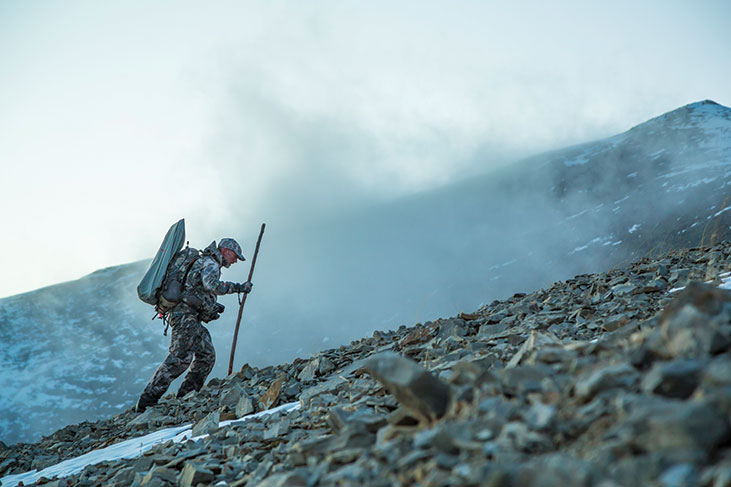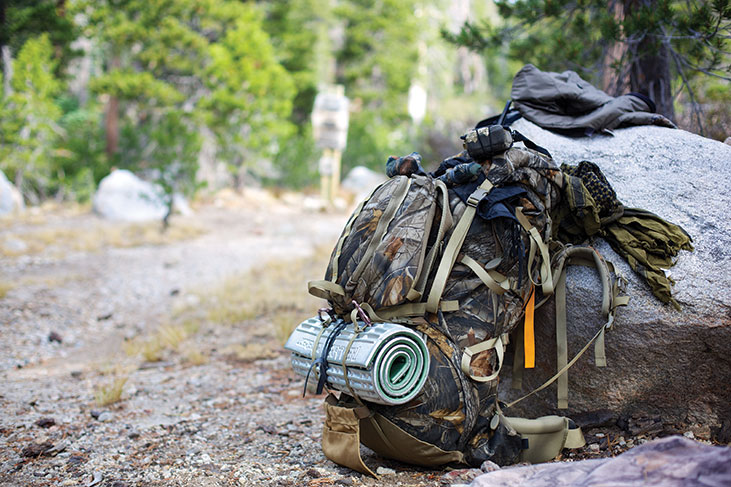A survival kit covers six necessary elements: food and water, communications, navigation, first aid, fire and shelter. When Mother Nature is at her worst, you will still be able to eat, treat an injury, signal for help, stay warm and protect yourself from the elements.
“There is a rule of threes for survival: three minutes without air, three hours without shelter, three days without water and three weeks without food,” said Dave Keaveny, medical operations specialist at Global Rescue and an advanced wilderness EMT.
A survival kit is intended to meet more primitive needs, such as fire, water and shelter, said Adam Bardwell, medical operations supervisor at Global Rescue.
“You should pack items that are durable, long lasting and versatile,” said Bardwell.
For example, paracord can be used to secure a tarp to a tree for shelter, gutted and used as a fishing line, woven into a net — the list is endless, said Bardwell.
“It is not about how long a kit should last, but how long you can survive on the kit,” said the medical operations expert.
Survival kit items are typically designed to do one or several things in the wilderness. A space blanket could be used for warmth, but the reflective side could also be used as a signaling device. A Leatherman includes all the tools you might need: needle-nose pliers, regular pliers, hand wire cutters, a combo knife, a bottle opener, a large screwdriver and a locking-blade knife. There are even outdoor knives with a built-in LED flashlight, magnesium fire starter, window breaker and seatbelt cutter.
“Items with more than one purpose or fall into multiple categories of survival are more practical, and save weight and room,” said Harding Bush, former Navy SEAL and security operations manager at Global Rescue. “A multi-blade folding knife falls into nearly all the categories — the saw can be used to cut branches for a temporary shelter or fire for signaling or to prepare food, and the tweezers can be used for first aid.”
Do not underestimate the potential for a survival situation. If you are traveling to a remote area, you must be prepared for an injury, getting lost or having your time in the bush unexpectedly extended.
“Proper planning for these scenarios can make the difference between life and death,” Bardwell said.
If your trip into the wilderness is well planned, balanced with your ability and you have the right equipment, what may usually be thought of as a survival situation merely becomes a short delay or an inconvenience, said the experts.

Are you ready to build your survival kit based on your destination, activity and season? Here are 20 items recommended by our travel and safety experts.
1) Aluminum Cup. Need to melt snow into water? Need to boil water? An aluminum cup will come in handy. Some canteen kits come with a heavy gauge aluminum cup while others are designed to fit over a 1-liter water bottle. A stainless-steel water bottle is also an easy way to boil water in a hurry, right in the water bottle. A fire-safe pot is durable multiuse, and can be used to purify water, cook and collect water.
2) Bivy Sack. “A Bivy sack is a perfect, lightweight emergency shelter for when you find yourself spending an unexpected night under the stars,” said Jeff Weinstein, operations supervisor at Global Rescue.
3) Communication Device. Most everyone has a cell phone. If you are traveling overseas, make sure you have a local SIM card, a cable and adapter and a battery bank. Going remote? Consider a two-way satellite communication device, like a Bivy Stick or a Zoleo device. They feature SOS buttons that directly link to the appropriate emergency resources, including your travel protection provider.
4) Duct Tape. Duct tape, also known as a survivalist’s best friend, can be used to stabilize a limb, patch a leaky tent, keep food bags closed, or twist into rope or loops to hang items from your backpack. Experts recommend bringing about 20 feet and wrapping it around your water bottle to minimize its size.
5) Emergency blanket. Wool is hands down everyone’s favorite material to stay warm even if you get wet. Space blankets made of lightweight Mylar might be easier to pack and can double as a reflective device. No matter what you bring, the key question: will it hold in body heat?
6) First Aid Kit. A stripped down first aid kit would include the bare essentials: a Sam splint, some Ace bandages and gauze pads of various sizes. Merola and Weinstein also recommend a tourniquet, a compression device that could be a lifesaver when you need to stop the flow of blood.
7) Fire Starter. Fire is a top priority in a survival situation. There are many ways to start a fire. “Weatherproof matches, lighter, tinder, magnifying glass, flint and steel, magnesium bar or a durable reusable fire starter,” said Garrett Dejong, senior medical specialist at Global Rescue. Pack the fire starter only if you know how it works, and you’ve practiced with it at home.
8) Gloves
Consider your destination and choose the most appropriate type of glove. Earthquake prone environment? Think work gloves in case you have to move debris. Cold weather? Waterproof mittens will keep your fingers warmer. Hiking or trekking? Gloves should combine warmth, waterproofing, dexterity, durability and usability. Having an extra pair is always a good idea.
9) High-calorie Food. Don’t just pack any food in your survival kit. Pack high-calorie food. You need a blend of protein, fat and carbs. Energy bars are a good choice. Look for options with high protein, like an RX Bar with 12 grams of protein. Look for real ingredients, like Larabars with dates, fruit and nuts. Bouillon cubes — either veggie or meat stock — have a two-year shelf life. You’ll be able to stay hydrated, have a small amount of nourishment, and the warmth of broth is a morale booster. Other ideas: trail mix, jerky and freeze-dried meals.
10) Light. Flashlights are usually the go-to light source when you are out after dark. Consider a hand-crank version if you don’t want to lug around extra batteries. Even better: a headlamp, which leaves your hands free. Chemical light sticks, found at any dollar store, are small and easy to pack.
11) Navigation tools. No matter how well you know the area or terrain, mistakes can be made. Never leave home without navigation tools, including a GPS unit with cellular or satellite coverage, a map and a compass. “GPS and smartphone navigation apps are a good idea, but batteries die and machines break,” Bush said. “Know how to use a map and compass. Review the map and your location before setting out.”
12) Over-The-Counter Medications. What over-the-counter medications do you take regularly? Add a small supply of pain relievers, antacids or decongestants to your first aid kit.
13) Paracord. Also known as 550 cord, it’s a must-have in Bardwell’s survival kit. “It is extremely versatile, lightweight and cheap,” he said. And the uses are endless: You can create a bow drill for fire, snares for trapping, weave a gill net, hang a bear bag, or take it apart (gut it) for the smaller strings inside the outer covering to use as fishing line.” Add 50 feet to your survival kit.
14) Signaling Devices. You’ve tried cell, satellite and radio communication. What’s left? A mirror or a space blanket with a foil side to reflect light (three flashes is the international distress signal) and attract the attention of another person, vehicle or airplane. The loudest whistle you can find will alert search and rescue to your location.
15) Tarp. “A tarp makes a great improvised shelter,” Bardwell said. “They are lightweight, durable, waterproof, easy and quick to set up.”
16) Travel Protection Membership. Help is just a phone call away if you have a travel protection services membership. With no distance requirement, Global Rescue services are available whether you’re close to home or on the other side of the world. We get you from the point of illness or injury to the nearest medical facility.
17) Utensils. You’ve got the multi-tool, but do you have a mealtime multi-tool? An eating utensil — used for cooking, eating or other useful purposes — should include a knife, fork, spoon, can opener or bottle opener. Many of them fold and unfold, and some come in their own storage pouch.
18) Water Treatment Supplies. Don’t just drink from any nearby water source — be sure to filter and purify the water first. “Water purification can occur through the use of chemicals (such as chlorine and iodine), by boiling water or by utilizing UV rays,” Weinstein said.
19) Zip Bags. Zip bags are a great way to keep items waterproof. Make sure the brand has a sturdy zipper and thicker plastic. GearJunkie lists all the uses for this versatile survival kit item: store toilet paper, keep electronics dry, organize snacks, keep fire starters dry/organized, pack out trash and catch rainwater.
Safari Club International highly recommends purchasing a Global Rescue membership prior to your next trip. Single trip, annual and family options are available. For more information, visit globalrescue.com/scimag or call (617) 459-4200 and mention you’re a Safari Club International member.




